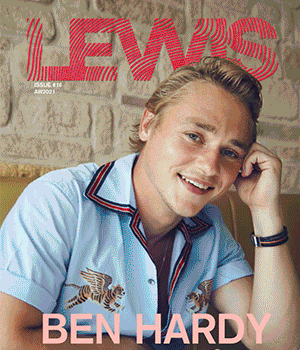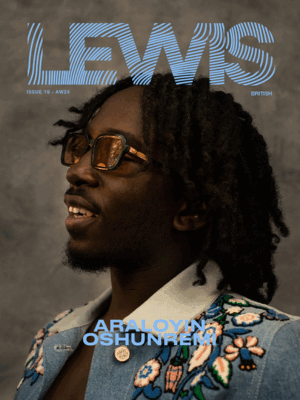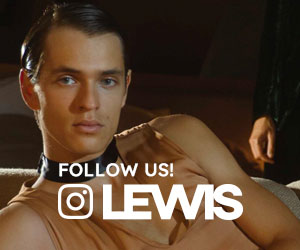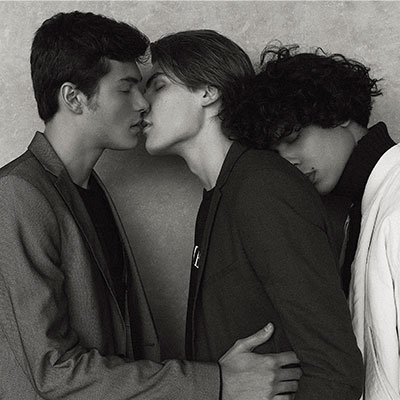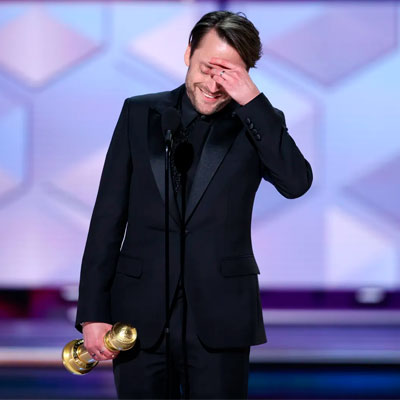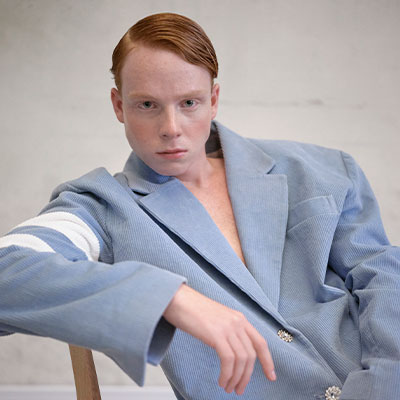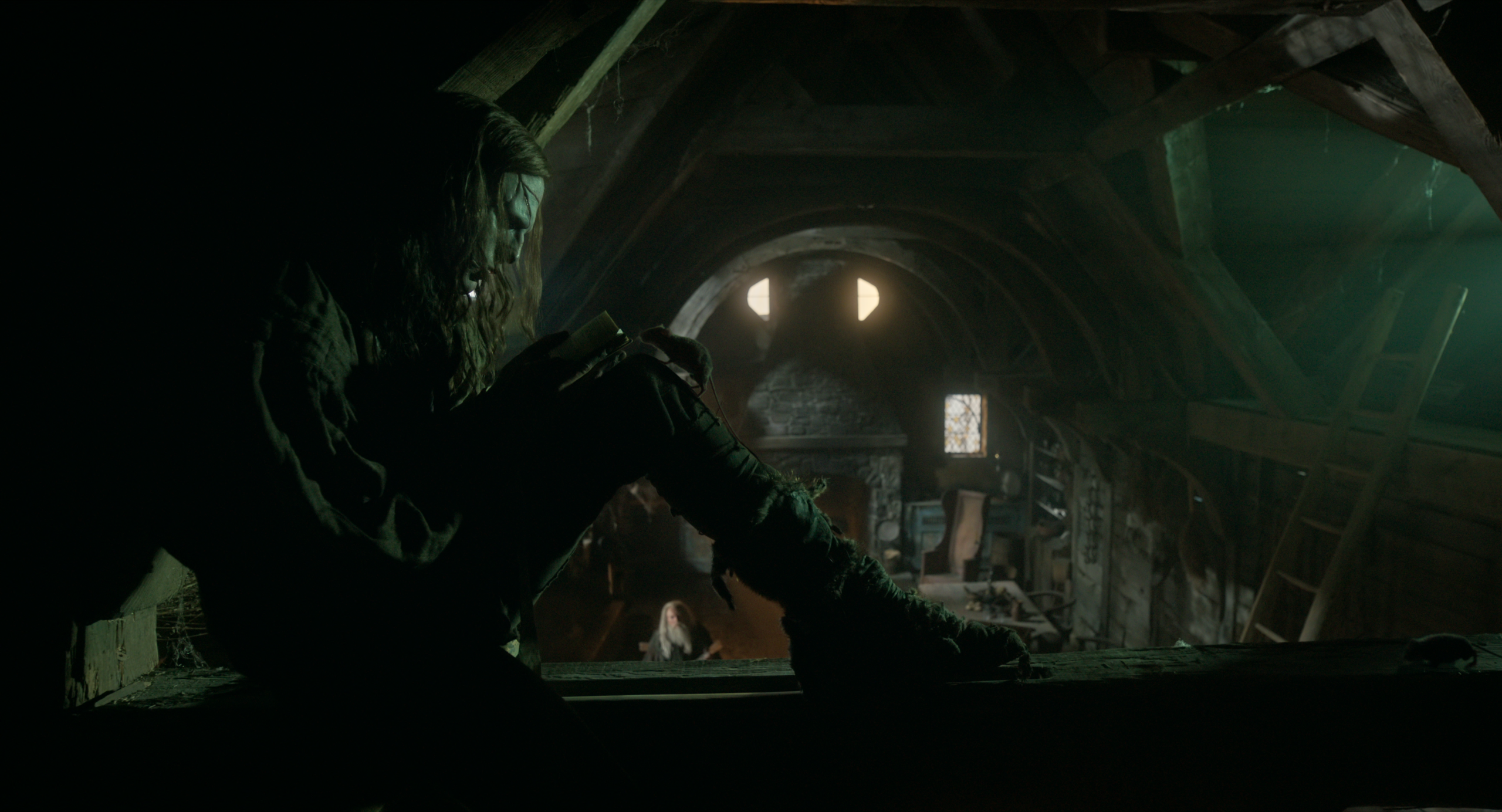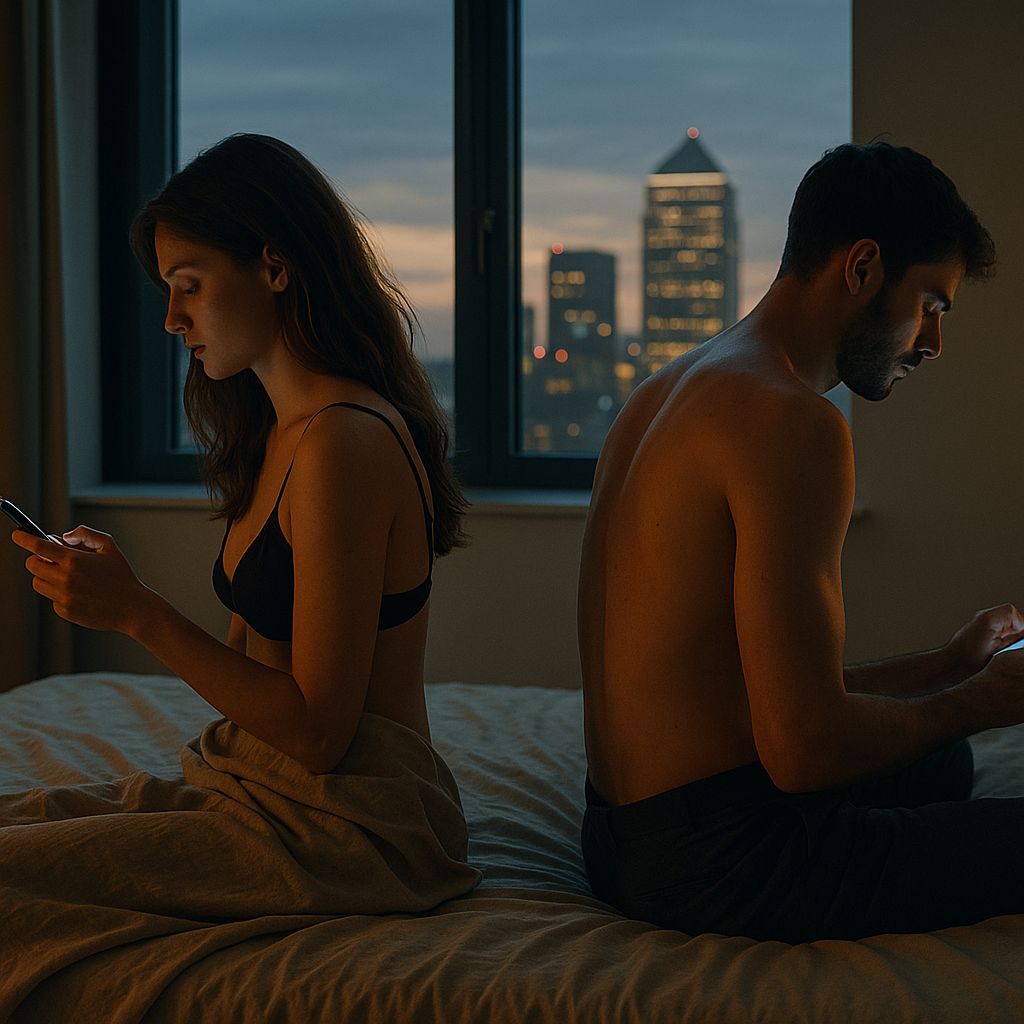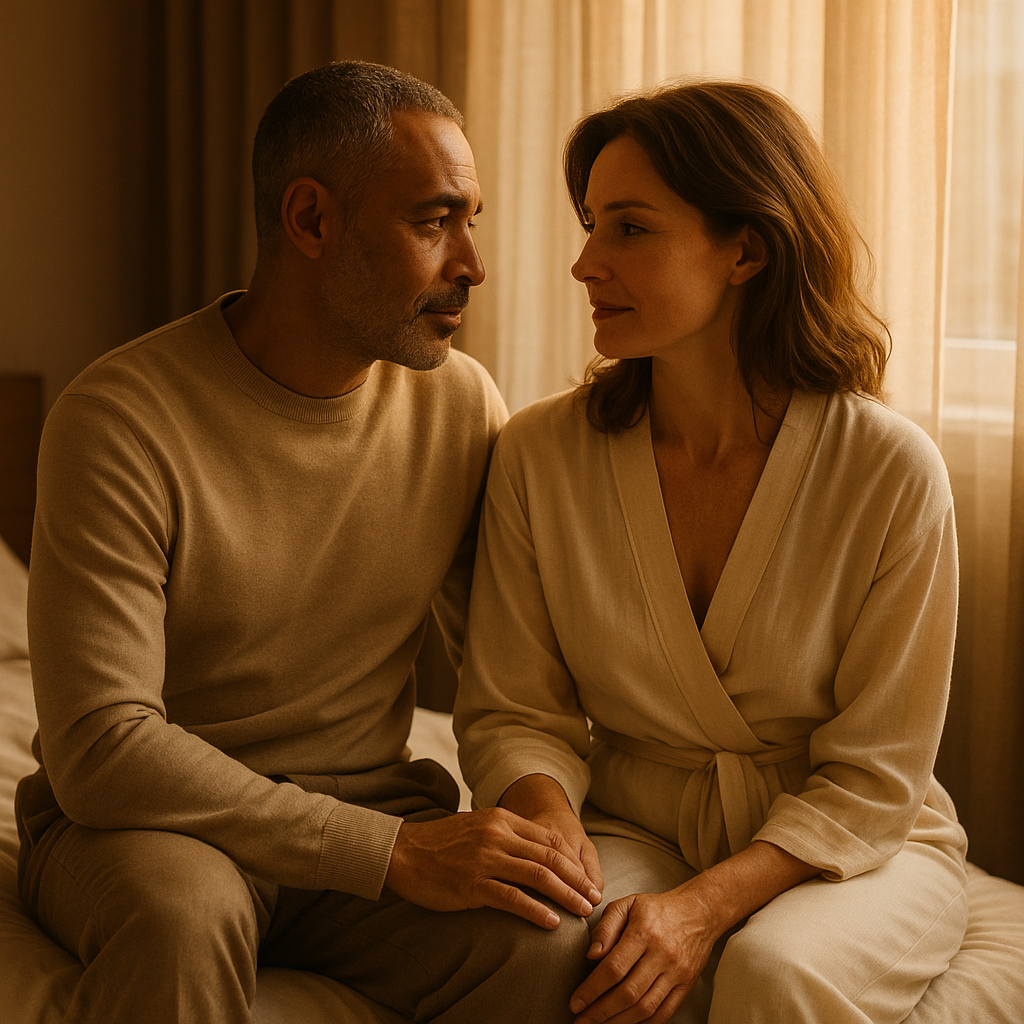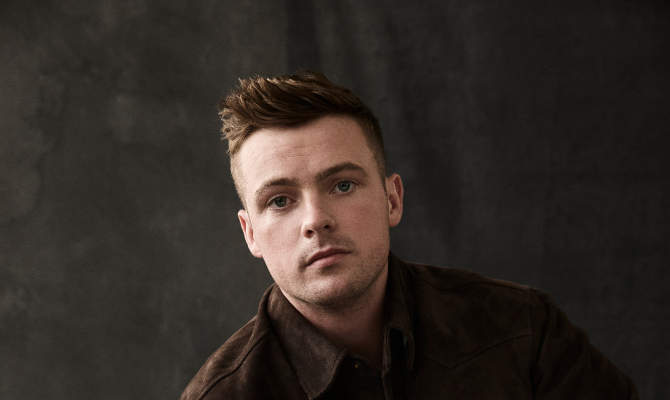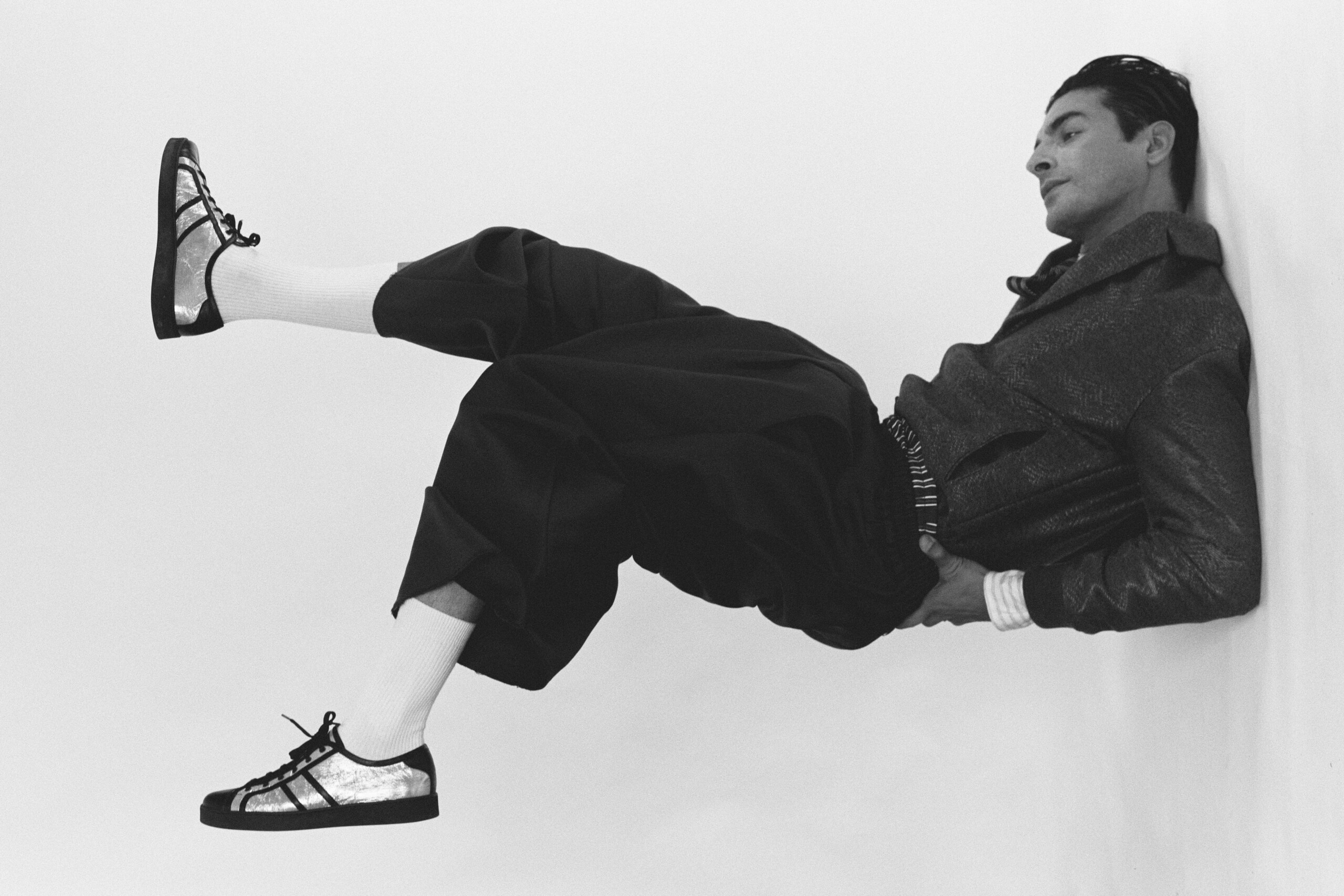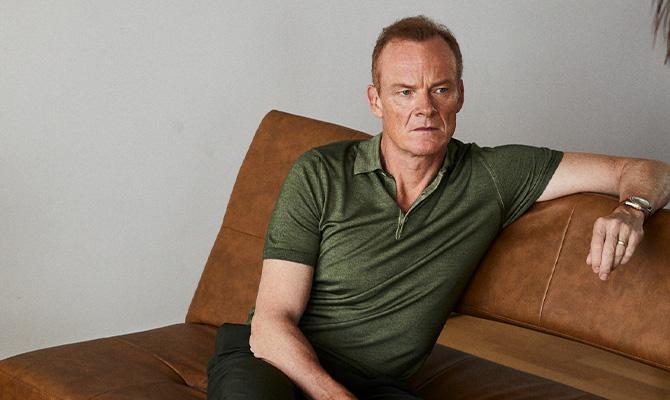In an exclusive interview with our Talent and Features Editor Sofia Deus, actor Jack Parr shares his exhilarating experience filming the underwater thriller ‘The Last Breath’, his memorable collaboration with the late Julian Sands, and his diverse roles in ‘Masters of the Air‘ and ‘Take Cover’. Parr also discusses his passion for writing, highlighting his short film ‘The Drop’.
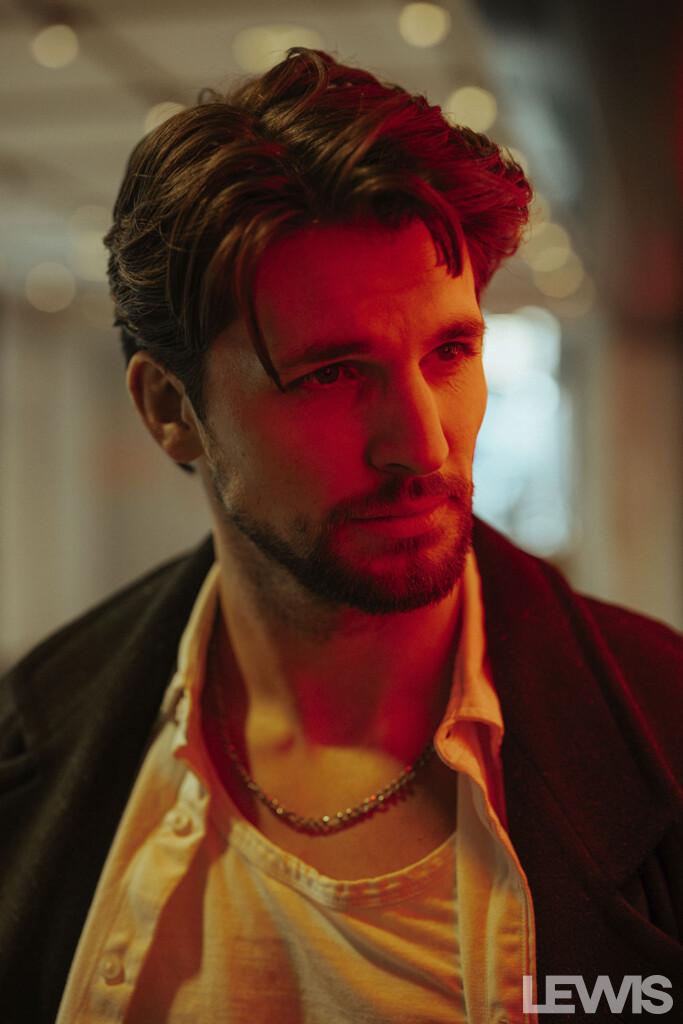
Photography @Bjorn Franklin
SD – Congratulations on your recent projects, Jack. “The Last Breath” seems like a gripping adventure. Can you share with us your experience portraying Noah in this intense underwater thriller?
JP – Yeah, I’m really proud of the film. And I’m really excited for people to see it. You know, it’s my first lead role. When I got the audition through, I thought, wow, this, this one just feels right. It felt like it made sense. So, I really went for it, you know, really went for the role. It was an amazing experience, probably one of the best experiences I’ve ever had on film. We were scuba diving for six weeks, and then away filming for two months in Malta and Belgium. We were in this huge tank scuba diving, all day, every day, for six weeks. So, we got probably more experienced than seasoned scuba divers doing 10 years. This scuba diving team said, look, you guys are diving more than professional scuba divers, they might get away once or twice a year, if they’re lucky. And we were diving five times a day! We were constantly going under to film again and again, so it was an amazing and unique experience. But it’s tough, because you can’t just look at your scripts. If you’re in a bit of a pickle, you’ve got a line, you can’t just go oh, I’ll get my script out of my back pocket – you’ve really got to know it off book – like back to front and sideways. It’s really daunting. And then you can’t just talk to the director because he’s on an underwater speaker. So, whilst we were filming, we could only kind of sign language to signal things like, okay and we understand. They were trying to give us directions under the water, and so we had to just try and figure it out. It was so strange filming underwater and actually doing everything ourselves, as we had imagined that the stunt team would do a lot. But the director ( Joachim Heden) just looked me in my eyes and said, I want you to do as much as you can. Fitting in with the fact that the film is a thriller wasn’t the hardest part, since I was already there (terrified) because of how daunting some of the underwater scenes were, like when I had to take my oxygen mask off! And the studio was completely dark! They wanted the set to look like an authentic sunken ship, so it was pitch black. So, when I took the mask off, there’s no oxygen and you’re five metres underwater, pitch black, and you have no idea where the surface is – it was extremely daunting and very scary. I was petrified, even though weeks before that scene I was training myself to hold my breath underwater for a long time – trying to be like Tom Cruise, holding his breath for five minutes – but actually performing that kind of scene was very visceral and daunting. I loved the experience though; I absolutely loved it.
SD – “The Last Breath” holds special significance as the final film featuring the late Julian Sands. How did it feel working alongside Sands, and how do you think his legacy will impact the film’s reception?
JP – It was amazing. Everyone was really excited to have Julian Sands on board. I remember the director said we’ve hit gold when they got Julian sands on board. He’s been in the industry for years. You know, he was part of the academy. Just an amazing guy, and he really took me under his wing. I remember thinking when I first met him, you never know how these actors are going to be, you don’t know if they’re going to just come on set, do their job and that’s it, but otherwise you don’t see them. And I didn’t know what to expect with Julian. But, from the first rehearsal and read through it was all ‘my boy, my boy,’ and he was the father figure on set and in the film. So yeah, he laid down the bond very quickly of this is how it’s going to go down, and this is going to be our relationship – very friendly and it was really sweet. We exchanged emails, and he wanted to rehearse and to go over the characters and the backstory. And I was just amazed by him, you know, he was getting older, but he was behaving like he had just started acting. He had so much energy! And It was just an eye opener. I was like, wow, never lose that flame. Never lose that spark. He never lost that spark, and it was amazing. And you know, he complimented me a lot, which made me feel good and put me at ease. He was a very wise man. It’s so sad that he isn’t here anymore, and we will miss seeing him when we all watch the film together. But he leaves his amazing legacy and one last movie, and, you know, it is sad to say, but he died doing what he loves. He was always talking about hiking and mountaineering, and he invited the director to join him. That’s what he loved to do. And that’s what I love about film, you know, you’ll always leave a part of you on this planet. Whenever you go, you’ve left something behind for people to watch and enjoy the entertainment. Yeah, so it’s sad to see him gone, but hopefully we did him proud. So, let’s see.
SD – Your role in the Apple TV series “Masters of the Air” has garnered attention. What drew you to this project, and what challenges did you face portraying your character amidst the backdrop of wartime drama?
JP – Well, I was only a small cog in the whole series. It was a big, big show, with a huge budget, but I was lucky enough to be a tiny part of it. But I played a real-life character. I was immensely proud when I got the job. I was like, oh my God, we’re telling serious, serious historical events here! And then there was the people attached to the project as well – it was mind blowing! For me, it was a bit of fate. I saw an article way before it came into casting and so I turned to my agents to see if they could get me seen for it. It turns out that it was Lucy Bevans office who was casting it, and I had just been seen by them for Batman (which didn’t go my way), but they said they would keep me in mind. And this led to getting me in four times over the year and I finally snagged a roll! The set was just so huge and so epic – as far as the eye could see was just everything 1940s/ WWII. So, you are so fully immersed you just believe it. They had real planes, ‘B-17s and just hundreds of extras and hundreds of crews. It was crazy! After a month of filming, there was about a month break and so I did another film called The Abomination. And that was all night shoots. I finished at four in the morning on my last day of night shoots, and suddenly I was called back to the set of Masters of the Air. So, I had to take a cab at 4am to get me there for 7am for call time. I remember getting back to the makeup room, rushing to get all my prosthetics off in time to get my car! And then I got a text from the cab driver saying I’ve got a flat tire, I’m going to be late, and I was like, this is not going to work out! Luckily, I did, and after sleeping in the cab it was straight into hair and makeup for Masters and then into the costume. And the costumes were so big and heavy because they were authentic thick wool and leather, which was necessary for the real-life pilots as it was minus 40 degrees up in the air. But of course, on the ground it’s really hot! We were having so much fun though, in these tiny planes, on set, in all this gear. It was the craziest experience I’ve ever had, because you have a mask and goggles on and everything and when they call cut, you literally feel like you’re going to pass out! Such hot and heavy work. That particular day, I’ve never worked so hard in my life. It was so physically exhausting! They even had to invest in these water-cooling vests. They’d put the vest on underneath all the suits, and then they put a little hole in the trousers, a little pipe would come out of the hole which when we were on a break, was plugged into a machine and switched on to pump cold water through the vests. So, every actor had one – it was just crazy. Everyone was treated the same, so everyone felt the same. We film like we were doing a service – telling something historical. Everyone was immensely proud and excited to be there.
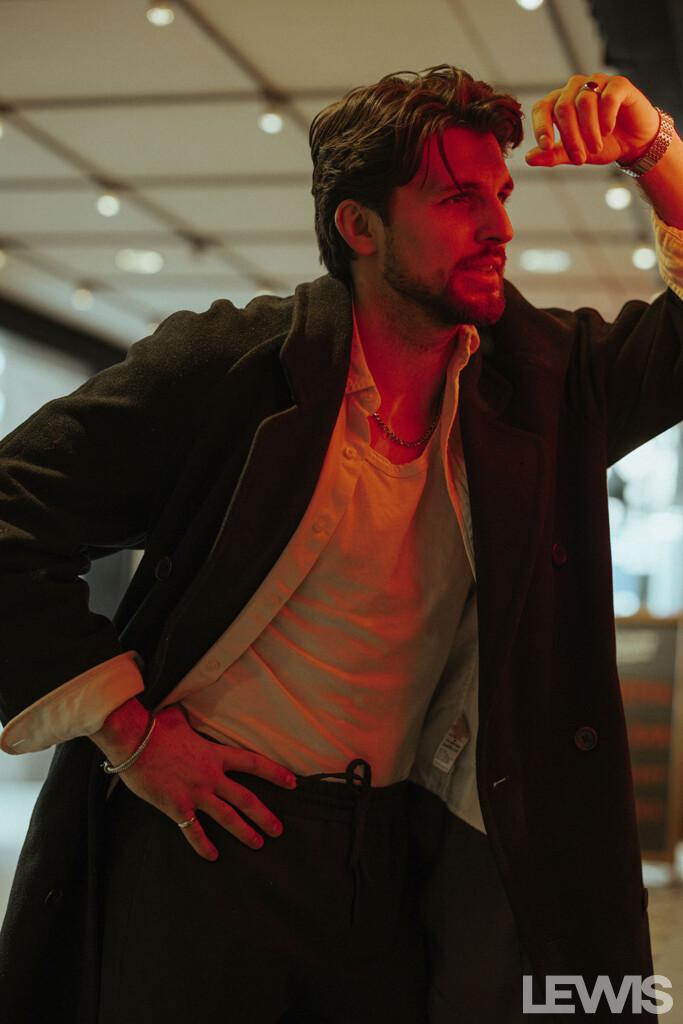
Photography @Bjorn Franklin
SD – “Take Cover” sounds like another exciting venture for you. Can you provide any insights into your character and what audiences can expect from this upcoming film?
JP – Yeah, so I play a character called Ken, he’s a loudmouth joker, brash guy. He thinks he’s funny. And he plays opposite Scott Adkins, who plays the main sniper. I play his spotter. A spotter has the binoculars and he’s looking out for kind of wind strength angles, and the distance to the target etc influencing the accuracy of the shot and is basically informing the sniper. So, they form a really a tight bond as they work together a lot. So, they are on this kind of last mission kind of job – a private job – and Scott’s character is basically going to retire after this. But of course things don’t always go to plan and they get ambushed. I don’t want to give away too much because it’s a thrill. But, yeah, they get in a pickle. I’m excited for audiences to see how it plays out. I’ve worked with Scott before, and Alice Eve is also in the film – though I didn’t do scenes with her. I was sort of sandwiched in between Scott Adkins and Alice Eve which I thought was cool, as they are big dogs in the industry! So, I’m very excited. It’s a very thrilling, action-packed film.
SD – Alongside your acting career, you’ve ventured into writing with your short film “The Drop.” What inspired this project, and how does the storytelling process differ when you’re both acting and writing?
JP – I say this all the time, I owe my sanity to writing. Because there are many actors out there who, you know, struggling in between jobs, and they kind of feel lost. And they don’t know want to do next. I started writing at the same time I started acting, because I wasn’t getting the roles I wanted. So, I thought, okay, let me write myself some roles. And I got so into the craft of writing. That was when I realised, I’m really in it for the art. I fell so in love with the craft that I started to write stories about what I wanted to say. And so in between acting, I’d start a project and I’d write films, and I’d write scripts, and I’d get lost in that. And then I’d get a phone call that I had got an audition, and I’d genuinely sometimes go, oh, yeah, I’m an actor – I forgot about that! I was so lost in the ride.
And so, I started writing shorts, feature films and TV pilots. And I was pitching them to directors that I’d worked with before and the advice I kept getting was I should do it myself, which was a daunting prospect as I felt like I didn’t have that kind of experience and wasn’t sure how to go about it. I spoke with The Last Breath director Joachim and told him I had managed to get funding for two shorts, but that I was scared about moving forward and I didn’t know things like where to put the lights and technical things like that. And he said, don’t worry about that, I’m a seasoned cinematographer and director, and I’ve been working in this field for years, and I came from the camera department. So that’s my forte. He said, you’re an actor’s director. You’re going to be focused on the actors and the story, so just focus on that, and hire the right team for everything else and you’ll be fine. So I went off and did these two shorts and loved it. And now we’re developing The Drop into a feature film! We’re kind of excited about it as we didn’t think it was going to go as far as it’s got so far, and more and more people are getting interested in it. But yeah, I just I genuinely love writing. I think both acting and writing complement each other – same if you’re a director and a writer – you understand actors differently, and you understand directors and what they want differently. And as a writer, you sometimes look at the script a bit different too and all those skills go hand in hand. We are really proud of The Drop and it’s doing well at festivals so far. And yeah, I think I take a lot of inspiration from things like Tarantino’s work and Good Time by the Safdie Brothers – I love that sort of film.
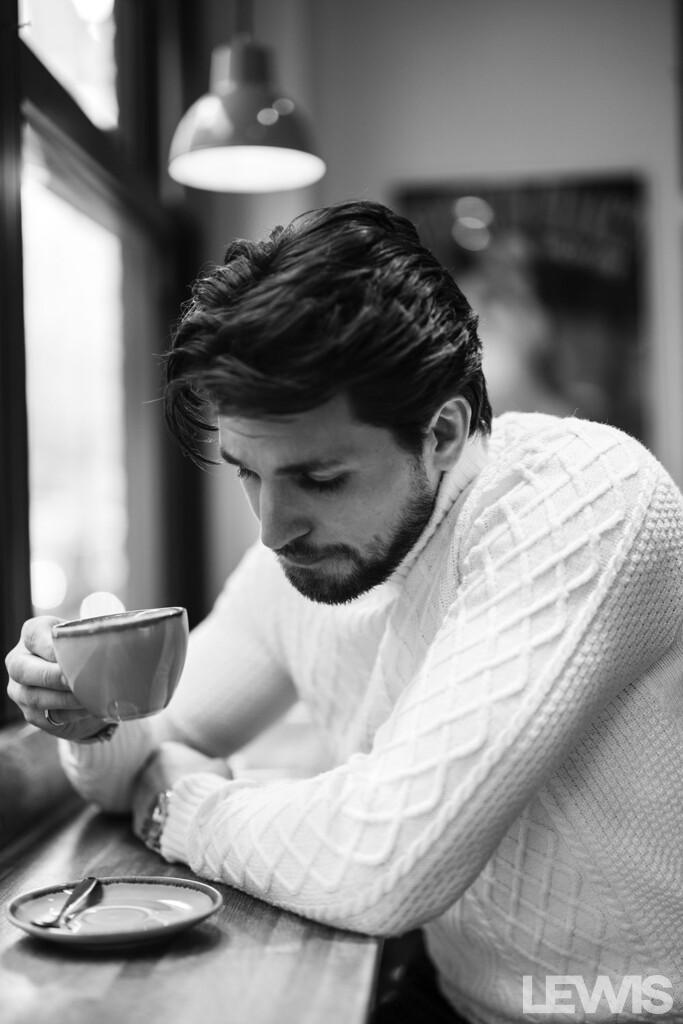
Photography @Bjorn Franklin
SD – With “The Drop” selected for the Indie X Film Fest in Los Angeles, what emotions do you experience seeing your work recognized in such prestigious circles?
JP – Well, it’s amazing, because my first ever short film, called Ghetto Bird, which I also acted in as well as produced, I wrote with my friend, I didn’t direct that one, but it’s funny as I remember us thinking it was going to do amazingly well – and then it doesn’t. And when it doesn’t; you learn for the next time around to not have such immediate high expectations. So, for The Drop, I wasn’t expecting anything. And so, when it was selected and I started to get direct messages from people saying, I’ve just watched your film, I love the way the characters are portrayed, I love the story, I thought ‘wow’, this is amazing. I think creatives can be insecure about their own work. I genuinely didn’t think anyone wanted to make The Drop. After writing the script I thought, who’s going to want to make this? Why would anyone want to make this? But it was amazing, on set people said that they have been gagging to do something like this. And so, when it gets recognised at festivals and people are showing serious interest, it’s an amazing feeling because it irradicates all the negative thoughts you have had and makes you feel like you might be on the right path and doing something good.
SD – Fantastic. Thank you. transitioning between projects can be demanding. How do you maintain this? Versatility and freshness in your performance, especially when moving between genres like Drama, Thriller, and action?
JP – Great question. I suppose I’ve probably never really thought deeply about it, because get stuck in with whatever it is. But you know a lot of people ask things like, what’s your dream roles, and it used to be so clear, but now, you know, I’ve realised, that sometimes you have to ask yourself, what are you doing this for? And are you doing it for the right reasons? And recently it’s become quite clear, that it doesn’t really matter about the genre, or the character, it’s really about story. And if the story grips you, and it doesn’t matter if it’s a shock thriller, or an action film, or drama; if you really resonate with the script, then that’s what matters. Then it could be anything – it could be a Western. So, there’s certain things like the script have to be right, and for The Last Breath, it seemed like it made total sense. And the character was there – I thought there were so many similarities to me. Whereas with The Abomination, I was playing a monster. And I was petrified. And I was like, I don’t know how to play this. For research I watched Robert De Niro’s performance in Frankenstein, but you also can’t just copy someone else’s performance; you have to find your own thing. I heard a reassuring thing that Robert Pattinson said in an interview. He said, sometimes, most of the time, I don’t know what to do until the day of filming. And then I just must do something. And he said that on The Devil All the Time, he was like, I was walking around learning my lines. I didn’t know how to play it. You know, you just have to decide at some point. So, with The Abomination I was so petrified, because it’s so far away from a character you can relate to – this monster being brought back to life. You’re thinking, how does he walk? Does he talk? And if you can’t talk, how long does it take him to talk? How long does it take him to learn? Does he have empathy for humans? I mean, that took a lot of work, but it’s so fun doing different things. Challenging yes, but this is what I love about it so much. This career is a whole life lesson. You’re constantly learning new things. You’re constantly studying. You know, one second, you’re studying a monster, the next you’re trying to be an advanced scuba diver. And then you learn about the sniper rifle team in the military, and next you’re going to be fighter pilot flying a B-17 in World War Two. It’s a fascinating business, but there’s never too much prep. So up until the day of shoot, I just make sure I’m trying to work on it every day until I step foot on set. That’s how I kind of operate. But it keeps you on your toes. So that’s what I’ve learned. I might not know how to do it every time and I might be scared, but it keeps me on my toes and that is what I love.
SD – “The Last Breath” immerses audiences into a high-stakes scenario, diving into the depths alongside WWII wreckage and sharks. How did you prepare for the physical demands of such a role?
JP – Okay, so, I mean, the funny thing is, I feared water, and my biggest fear was drowning, so this was a terrifying job to take on, considering we would be spending the majority of the shoot stuck in a huge tank underwater! And so, even before I was offered the role, I went out and got my Padi certification just for the audition. My family were really proud of me, considering my deep fear of the water. So the fear needed for the role was already present for me as the shoot itself was terrifying! I mean, I couldn’t imagine we’d actually be a part of the advanced training. I thought that would be left to the stunt divers. I remember we had to do a 30-metre dive to see a shipwreck, and you are knelt right on the seabed, and you look up and you can’t see the surface and your air bubbles go off and they just disappear. And the scariest thing about scuba diving is that once you’re at certain kind of depth down, you can’t just swim up, because of the bends (decompression sickness), so the fear isn’t just that you need to get oxygen, it’s what happens if the oxygen runs out. If you do run out of oxygen or if there’s a problem, you do have a spare regulator, or you always have a buddy, and you can use theirs and then ascend slowly together. So yeah, if there’s a problem it must be dealt with down there, and that was the biggest fear. So I really got to feel some of the fear and panic that descends over the characters in the film when the action starts to unfold.
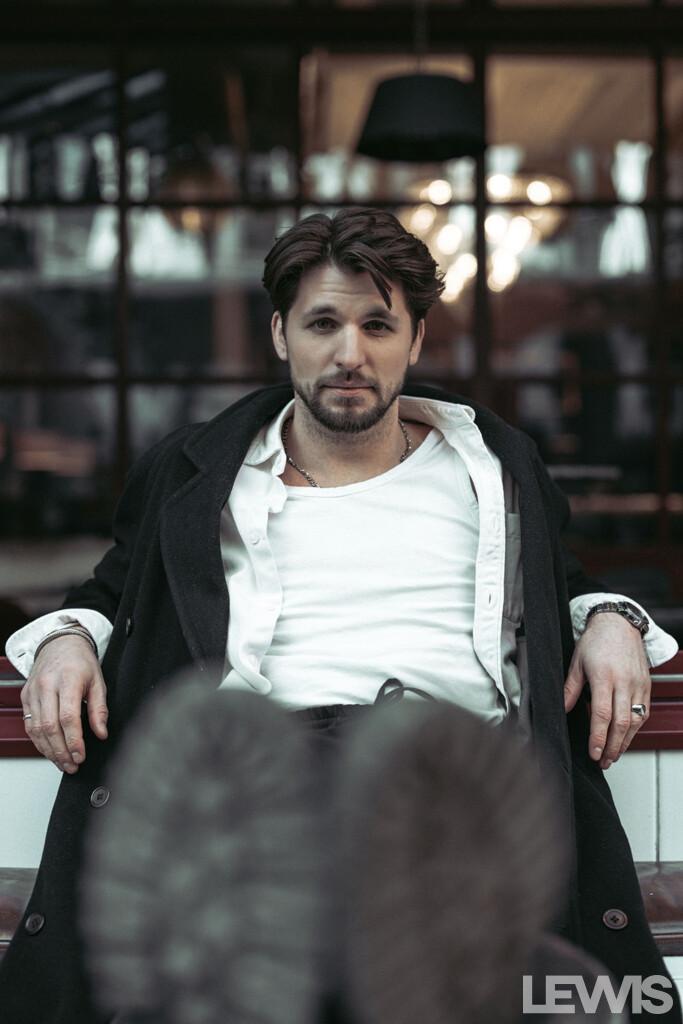
Photography @Bjorn Franklin
SD – Your co-stars in recent projects include names like Callum Turner, Rafferty Law, and Alice Eve. How does collaborating with such a talented ensemble influence your own performance and approach to your craft?
JP – I am so fascinated, but I probably shouldn’t ask them how they do that process because I think everyone’s so different. In some ways, acting is an individual sport, you must just go with your own craft and learn your own ways. Working with Alexander Arnold, on The Last Breath, I noticed that he was always writing loads of notes and I was looking over my shoulder thinking, should I be doing that? And so, I asked him if he would mind sharing with me what his process was. It was fascinating; he wanted to know exactly to the minute how long we would have left and therefore how much oxygen the characters would have left in each scene, on every page. I thought it was super smart, an actor who was really thinking about the process for the characters. You know, sometimes it’s a masterclass watching others work.
Working on Peaky Blinders, I got to watch Stephen Graham, Cilian Murphy and Paul Anderson create their magic and I would you just stare at those guys and I really understood why they were there, and it made so much sense to me. They were so professional, so prepared. And so, I love working with people like that and seeing each actor’s process. Every job is so different, so you prepare differently every time. I also love the privilege of being able to work with talent like that, and seeing a side to them that people watching the show don’t get to see. The behind the scenes!
SD – Looking ahead, what aspirations or goals do you have for your career, both in terms of acting and any future writing endeavours?
JP – In terms of my writing, I really want to tell some personal stories. I have some stories that I think are important. I’m from a tiny mining village up north, and theatre was difficult when I was a kid because everyone was playing rugby. And I played rugby. And it was very odd choice to opt for theatre. You know, it was tough. So, I did a little play when I was 14, and the bad experience I had from that, from my mates and people, meant I never did it again as a child. From those experiences, I’ve got a script that I’ve written called Jack the Lad, about this kid who does a theatre play and has a real tough time from it. And so I want to tell that story, and explore other ideas I have about things also set in the north.
I want to continue to be involved with incredible festival films, with projects that have really rich stories, things that show at places like the BFI. I’d rather do those than do the big, huge Hollywood blockbusters. I’m literally saying to my manager, how do we do that? How do we get into those arthouse films? And so, I’ll put it out into the universe, and we’ll see what happens.
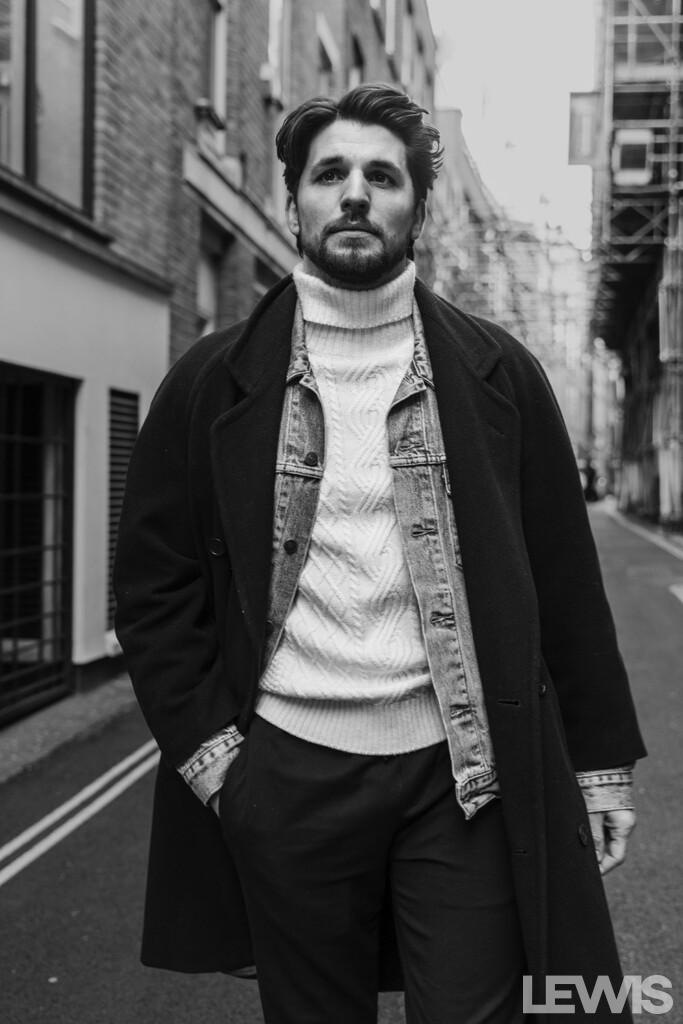
Photography @Bjorn Franklin

